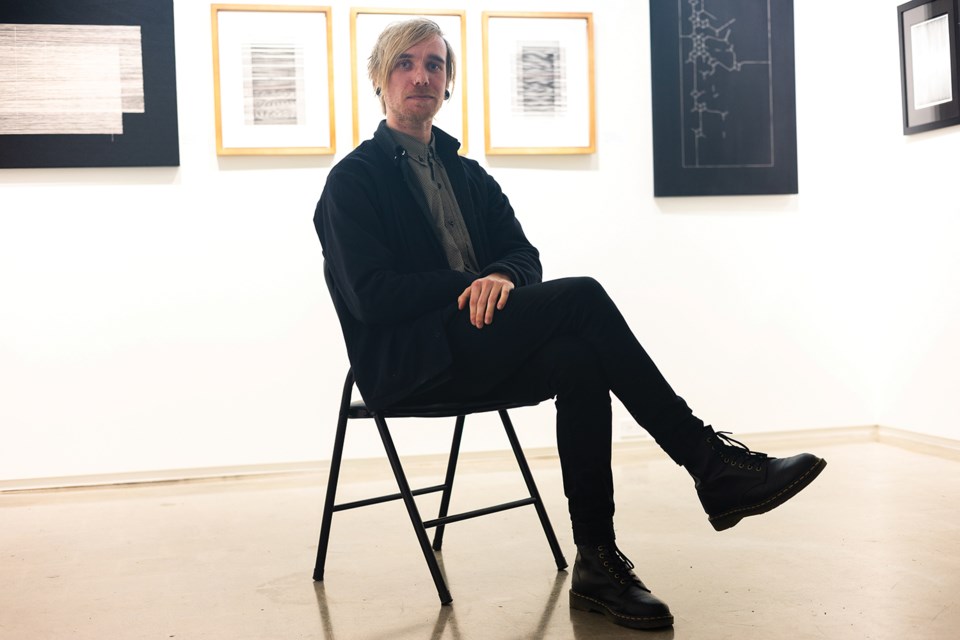Fusing music and polyester threads, an artist now exhibiting at the Gibsons Public Art Gallery does more than read between the lines: he uses the lines themselves to express the shape of sound.
Richard Charter is a composer and pianist who earned music degrees in Calgary and Victoria. He now works as a professional transcriptionist who listens to music, commits it to paper, and prepares digital music scores for a publisher. The process of synthesizing tunes into tablature prompted him to stretch the boundaries of the centuries-old discipline of score-writing.
“I’ve been really intrigued by how visually impactful music score is,” he said. “I find that when looking at a piece of music, while there are no actual decibels to be heard, it’s still psychologically a very loud experience, and that’s something that anybody can engage with whether they’re a trained musician or not.”
Charter opened his exhibition, Vertical Human // Horizontal World, during a public reception at the gallery on Jan. 18. It is the Vancouver-based artist’s first appearance on the Sunshine Coast. His two-dimensional works echo the aesthetic sublimation in the gallery’s complementary show of prints by Sunshine Coast photographers Alan Sirulnikoff, Alanna Wood, Brian Baxter and Troch.
In Timbre, Transformation, Charter threads polyester sinews across canvas, stretching irregular polygons across ladders of horizontal strokes. In it and the nearby Music of Happenings (in which a shadow box adds another dimension to the angular array of threads), intangibles like pitch and harmonics take physical form.
“The long Western tradition of notating music has become complex and prohibitive for a lot of people to enter into music because of the standards that we have with notation,” Charter observed. “I think it’s important to demystify it to some extent, to democratize it, to invite people into the music-making process or to engage with something that is perhaps more traditional — done through a contemporary lens.”
When penning music scores using a ruler, Charter began experimenting with pulling threads to create taut lines. He translated the technique into the use of archival pens on watercolour paper, creating densely-packed and overlapping systems. In O’ No. I – III, long strokes traverse a monochrome lattice, evoking falling pitches or long-sustained notes. The flow of time becomes a matter of interpretation, recalling 20th-century experiments in non-traditional notation. “A musician is invited to play the piece with their own impression,” explained Charter, “and it means that every single musician will have a different take on the score.”
Viewers asked Charter if he uses computers to create his rigid angles and parallel lines. In fact, the austere designs are all created by hand in a process that he describes as meditative — and intentionally fixed in the geography of a richly-textured world.
The exhibition’s title is an allusion to poetic traditions that describe the horizontal sweep of rolling grasslands, occasionally interrupted — staccato-like — by upright human beings. The threaded polygons of Four Hues in Resonance form craggy upwellings, ultimately anchored and tempered by the solemn regularity of dark-lined bars.
“I’m glad I can offer a lullaby for a very frenetic world,” added Charter.
Vertical Human // Horizontal World remains at the Gibsons Public Art Gallery until Feb. 9.



